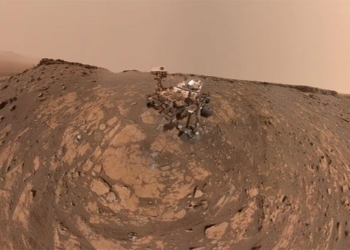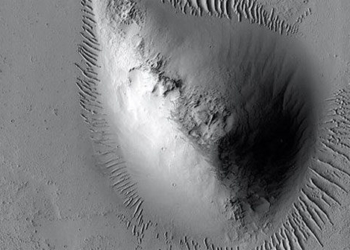Although it continues to spark curiosity, researchers have found a reasonable explanation for these images.
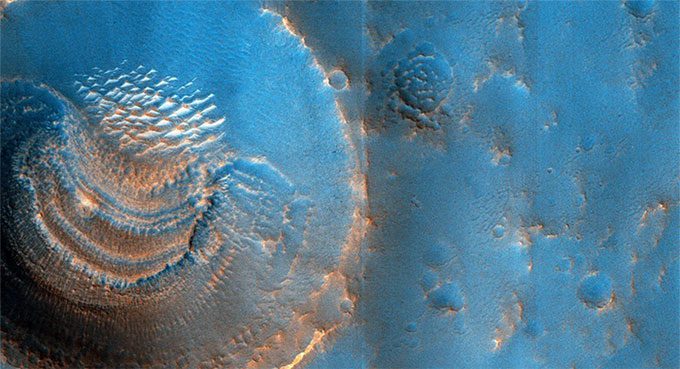
The image has been edited to highlight the formation and characteristics of the crater with layers of sediment within it. (Photo: NASA).
On December 14, astronomers from NASA’s Mars Reconnaissance Orbiter (MRO) discovered some strange sediments appearing within a series of craters in the Arabia Terra region in the northern part of Mars through high-resolution imaging experiments.
The NASA orbiter captured images of several craters in the Arabia Terra region using the High Resolution Imaging Science Experiment (HiRISE) camera.
Paul Geissler, a member of the HiRISE team, noted that these craters “contain a lot of sediment with mysterious shapes and distributions.” HiRISE is operated by researchers at the University of Arizona.
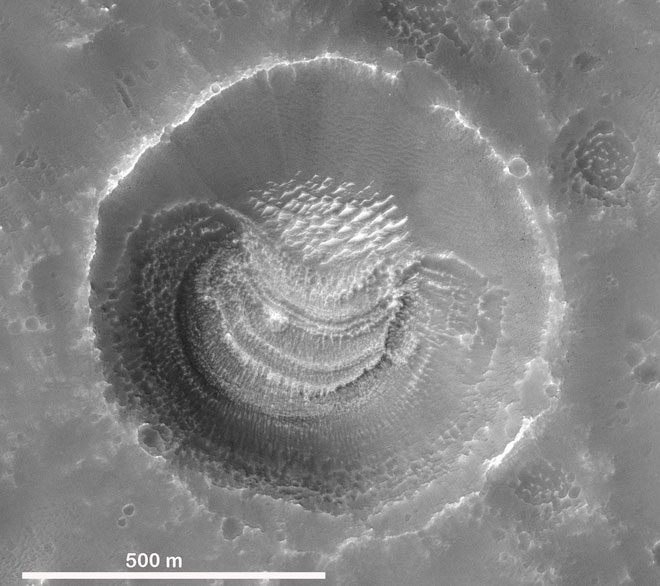
A detailed image of one of the craters featuring the strange sediments, captured by the HiRISE camera of MRO. (Photo: NASA).
According to the researcher, there are several explanations for this mystery. “The sediments have many layers of horizontally stratified rocks, which could be layers stacked on top of each other or step-like terrain,” Geissler explained.
“They also exhibit bright streaks radiating outward. The strange sediments only appear south of craters that are over 600 meters in diameter. Smaller craters do not have them,” the researcher continued.
Despite these details being somewhat puzzling, Geissler has a theory related to the sublimation of water ice on Mars. Sublimation is the process of transforming a substance directly from a solid to a gas, bypassing the liquid state.
“The step-like structure may result from different periods of sublimation of water ice on Mars. Perhaps the larger craters have penetrated into the groundwater 45-60 meters below the surface and became flooded after their formation,” the researcher stated.
This is not the first time that sublimation has affected the terrain structure in this region. In 1999, researchers discovered the “Galle” crater in the southern polar region of Mars.
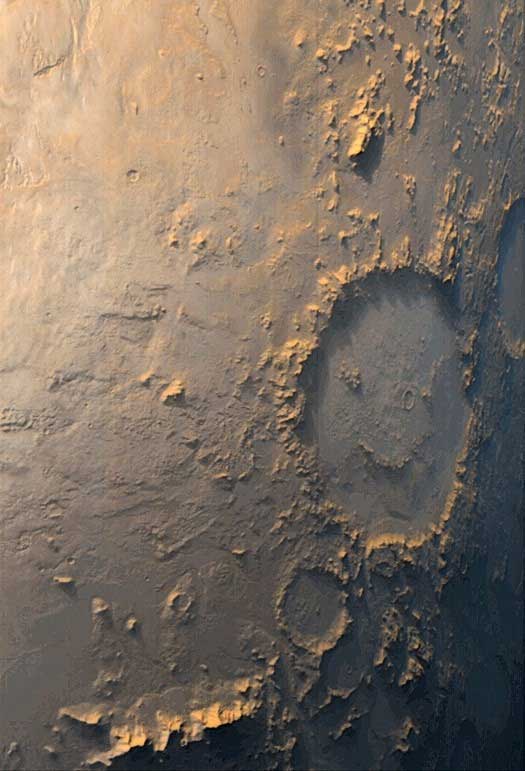
An image of the Happy Face crater taken by the Mars Global Surveyor in 1999. (Photo: NASA).
This crater is also known as the Happy Face because a curved ridge in the southern part and two smaller clusters of hills in the north form a smiling face. However, over time, the sublimation process has distorted this face.








































